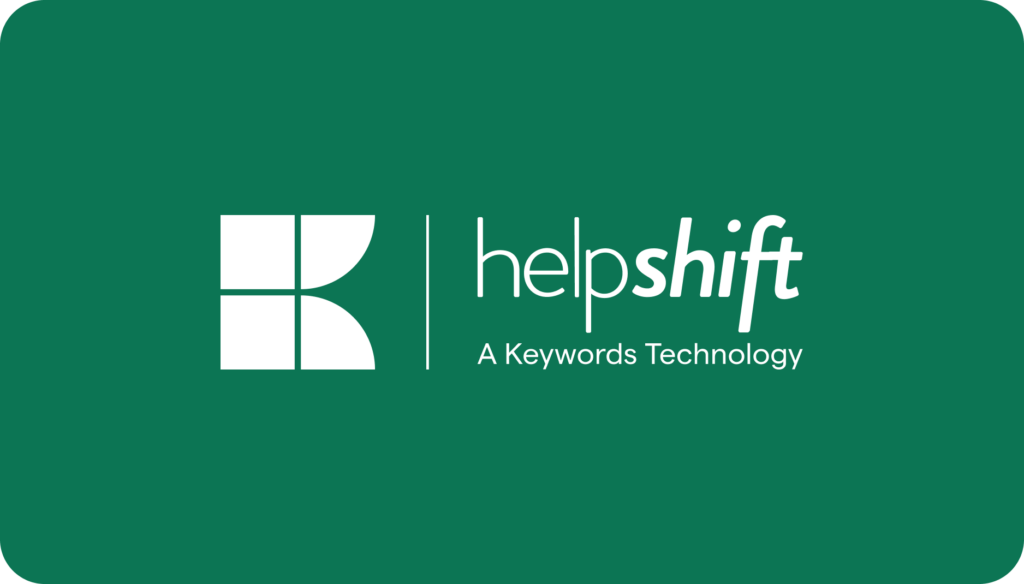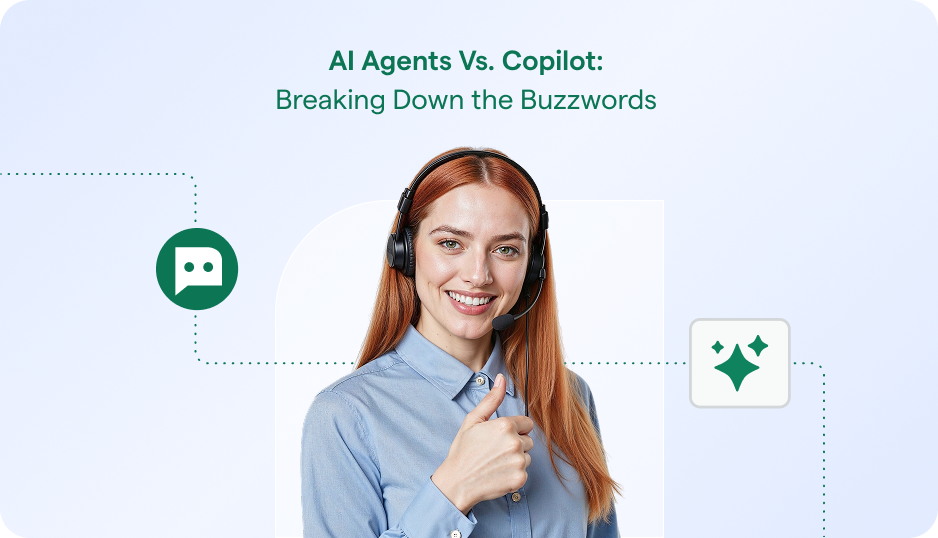Abinash Tripathy, Helpshift CEO & Founder, responds to questions from Customer Contact Week (CCW) about automation’s role in the future of customer service
[CCW] Before diving into best practices and opportunities, it is important to set realistic expectations about automation. What can automation do for our customer contact function? What can’t it do?
[AT] Automation is seriously underutilized in modern contact centers, but that doesn’t mean that it can do everything. In fact, it adds the most value when used as a hybrid solution in conjunction with both AI and human support.
In-app messaging-based customer service provides one of the best use cases for automation. In practice, AI-powered ticket classification can act as an initial filter, chatbots can handle rote issues through automated scripts and workflows, and agents can pick up the complex issues that can’t be solved through self-service or bots.
Hybrid approaches like these help customers get efficient solutions (without waiting on hold!) and reduce costs at scale for organizations. The key to achieving this, though, is not relying solely on any one component of the tri-part solution. Together, AI, automation, and human agents operate more effectively than any one does on its own.
Ultimately, AI does not possess the emotional ‘soft’ skills that are required to handle more complex support cases. This is where human skills are needed, and this is likely to be the case for the foreseeable future. By leveraging automation in the way described, agents will have more time to employ those skills with every customer, increasing both agent and customer satisfaction.
[CCW] Given those parameters, walk us through the best automation journey. Which tasks should we automate first? Which make sense as longer-term projects?
[AT] The simplest and highest value first-step that contact centers can take is to implement “QuickSearch Bots” — that is, bots that can handle simple issues with associated workflows. For instance, if a customer has a question about shipping, the bot could automatically link the customer to a knowledge base article about the company’s USPS integration, average shipping time, etc. Implementing QuickSearch Bots is relatively simple and they provide immediate value-add through ticket deflection.
The next step is leveling up these QuickSearch Bots and integrating them with AI based ticket classification and routing. AI can automatically classify issues and route them to different bots (or an agent) based on the type of problem.
From there, contact centers can augment agent interactions with automated workflows so that the two work seamlessly together. Bots either tee up issues with context to agents, or agents perform complex tasks and then hand the rest of the issue off to bots to complete the process.
Over the next few years, bots will become proactive, addressing issues before they’ve even become problems. Once this happens, agents will come into play for novel and ad-hoc issues. Organizations that have taken the above-steps are well-positioned for this new frontier of customer service.
[CCW] What benefits should a business expect by following that roadmap? What pitfalls must it be careful to avoid? If possible, please share some illustrative examples.
[AT] Businesses can expect payoff from automation across three dimensions: agent productivity, customer satisfaction, and cost of service.
Agent productivity goes up because fewer issues have to go through an agent in the first place; handle time goes down with bots collecting upfront information; and time-to-first response improves due to reduced ticket volume for each agent.
Consequently, labor costs decrease and agent retention improves. Customer service agents can focus only on those high-level issues that are too complex for bots, which makes the job more engaging and rewarding.
Customer satisfaction also improves due to faster time-to-first-response and issue resolution.
These results are illustrated in our 2019 State of Customer Service Automation Report.
[CCW] Describe what automation means for customers. How will it change the way they interact with brands? What metrics help quantify whether it is contributing to the CX?
[AT] Improved CSAT is a major driver behind AI and automation today. Automation enables brands to understand customer needs, thereby reducing customer effort and time spent interacting with the customer service department in the first place.
From the customer perspective, automation enables fast, integrated, efficient customer service. Bots ensure that customers get rapid responses to their initial inquiry, behind-the-scenes agent dashboards ensure a seamless transition from bots to agents and from medium to medium (e.g. phone to messaging), and the combination of AI, automation, and agents ensures that customers receive the most efficient route to a solution possible.
[CCW] Helpshift views “customer intent” as inextricably linked to the automation process, particularly when it comes to chatbots. Walk us through this connection.
[AT] One of the most frustrating things that can happen to a customer is to be transferred back and forth between agents. Not only is it a waste of time, but the customer also ends up having to tell and retell the story of their problem, which adds to their anger over the issue happening in the first place.
When brands can correctly identify a customer’s intent from the get-go, they bypass this all-too-common scenario.
This is just as, if not more, important in automated workflows. Correctly identifying the customer’s problem is the make-or-break step in offering effective, intelligent automation. Without it, all the benefits of automation become null, and indeed can even contribute to making the customer contact experience worse than it would have been without automation.
[CCW] What happens once an automation platform understands customer intent? How does it decide whether to keep serving the customer — or escalate to a live agent?
[AT] This is totally dependent on the organization and its resources for self-service and automated workflows. The same question at one organization could be relatively uncommon and get routed to an agent, while at another company it could be the most frequently asked question and get routed through a workflow.
Companies typically start by automating their simplest and highest volume issue categories. They build workflows based on the most common cascade of questions and answers. It’s also an automation best practice to leave “escape hatches” at certain points in the bot-based interaction where the customer can choose to leave and speak with an agent. This ensures that if a customer is ever served incorrectly by a bot, or for some reason just needs to speak with an agent, they can.
[CCW] Helpshift also has an interesting approach toward conversational AI, particularly regarding the question of whether bots should appear “human” to customers. What is your take on this issue?
[AT] The issue is less a matter of whether a bot should appear “human” to customers, as it is whether a bot can appear “human.” I believe bots provide the greatest value-add not when they’re making stilted small-talk, but when they’re quickly leading customers to a resolution.
A lot of the blowback against chatbots that we saw a few years ago was a result of brands trying to pass off robots as humans. Until it’s actually possible to make a Turing-test-passing bot, there’s nothing to be gained from this, and a lot to be lost. Customers should trust bots for what they are: automated machines that can make processes more efficient and reliable.
[CCW] Why is making the digital transformation – particularly when it comes to elevating communication options like messaging – so important for companies? How does automation empower this transformation?
[AT] The two most salient reasons organizations have for making the digital transformation are customer satisfaction and cost of service. Customers today are used to communicating on digital platforms — be it Slack, Facebook Messenger, or iMessage. When they’re forced to communicate with brands only via phone, often with long wait times before they can talk with an agent, this creates a disconnect between their expectations and the treatment they receive. It’s high time for contact centers to meet customers on the platforms they want to use.
Additionally, legacy contact-center solutions are expensive. Like all manual processes, they’re slower, less efficient, and therefore pricier than their digital-first counterparts, like in-app bot-enhanced messaging. Because the messaging channel is the easiest to automate, it’s where you’ll find the most automation use cases.
[CCW] What is the future of customer contact automation? Do you see the conversation shifting beyond the more “obvious” use cases (chatbots, agent augmentation tools, RPA)?
[AT] The future of customer contact automation will move from a retroactive solution model to a proactive service model. Imagine an IoT-connected device on an electric car sending a signal that the battery’s ability to hold a charge is fading. Instead of dealing with an urgent ticket from a customer whose car is dead on the highway, customer service proactively notifies the driver to bring the car in for a battery change. As vast amounts of data about each customer continue to become available, this futuristic model of customer service will become more and more viable.
[CCW] What will this mean for the future of agents?
[AT] While proactive service will largely be handled by AI and robotic process automation (RPA), the customer service workforce is not going to shrink. It will morph. Rather than employ hundreds of customer service agents, an organization will employ hundreds of people who make futuristic customer service possible. These will include automation specialists, data scientists, robot monitoring staff and content aggregators/curators. Economists have termed shifts like this “labor switching,” wherein an industry moves from hiring one type of talent to another, keeping its labor force the same in size but different in substance.



